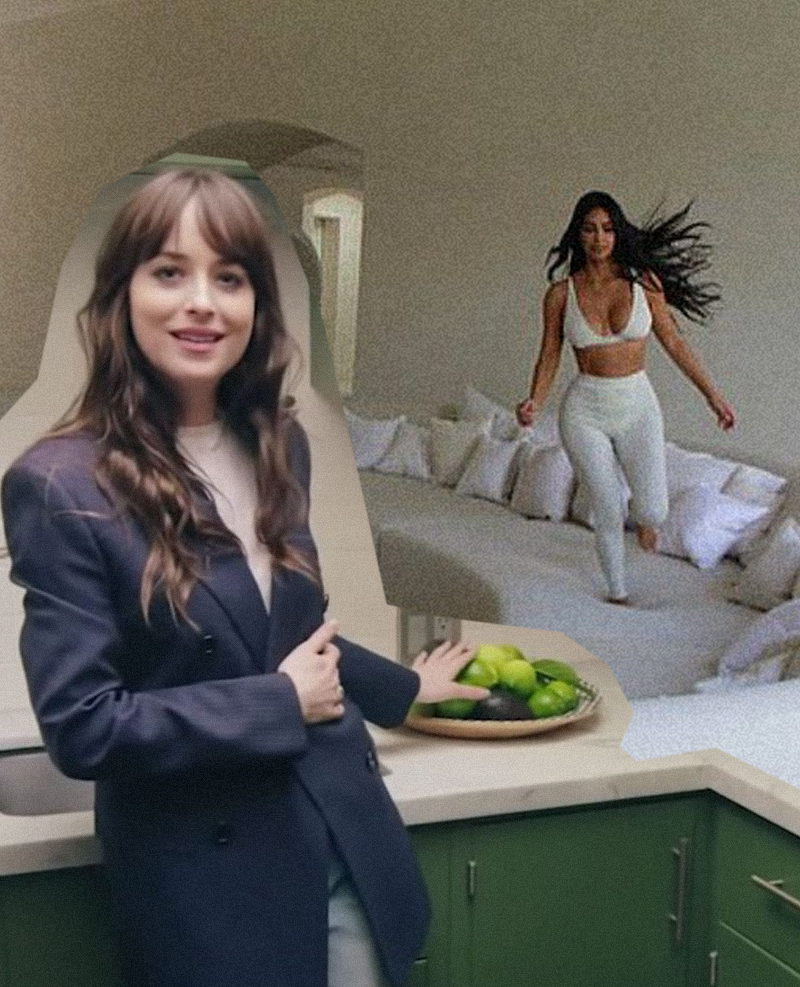When Minimalism Isn’t Relatable: Inside the Celebrity Dream House
Make it stand out
The concept of the home has always been haunted by the spectre of class. Yet now more than ever the all-seeing eye of social media has granted us newfound access, with branded content more desperate than ever to capitalise on the complicated intersection of envy and aspiration we feel when gazing onto what we can’t have. We enter the dream house by way of the YouTube house tour: We gaze, awestruck, as the camera lens fixes on a celebrity ushering us in. We follow them into the interior, on the verge of uncovering something sacred. We can’t help but imagine ourselves on the other side — occupying our own perfect, beautiful space filled with perfect, beautiful things.
When the externalities of wealth manifest themselves in the privacy of a home, it denotes not only a certain social status, but a refinement of taste. Combing through the archive of Architectural Digest’s Open Door series, one can observe an emergent aesthetic that unites each home, from Kim Kardashian’s barren stone age accommodations to Dakota Johnson’s green kitchen tiles.
The hallmark is a kind of curation that leans minimalist and bare, wherein each object is specially picked because it contains some kind of intricate history. The end result is a highly curated home that seems to contain more space than one knows what to do with. In the essay Everyone is Beautiful and No One is Horny, RS Benedict describes the McMansion as, “massive, sterile cavernous spaces with minimalist furniture. Kitchens are industrial-sized and spotless, and they contain no food.” Every house featured in the Open Door series is immaculate — but it’s not just that they’re pristine, it’s that the home itself looks like it wasn’t made to house the messiness that comes with living in it. Who can imagine anything extraneous in a room so curated that it contains only custom hand-carved dining tables and vintage Italian furniture?
___STEADY_PAYWALL___
The lives of the wealthy figure differently in ways both physical and abstract. Having adapted to a lifestyle that requires sustained isolation in order to preserve its coveted quality, this principle must enforce itself at all times. This extends similarly into the public sphere - the notion that certain places, like Nobu in Malibu or gated homes tucked away in Calabasas, can offer insulation from the layperson by virtue of their exclusivity. In the essay On Loneliness, Hannah Baer writes that “being alone is part of the luxury aesthetic…Even in spaces you pay to enter, there is often a more expensive area that’s less densely populated. This spatial sense of class correlates to the idea that money frees you from the inconvenience of other people.” There is an emptiness that is then left open: a widening gap between the celebrity and the general public, manifested not merely in terms of material wealth, but tangible space itself. The celebrity, from persona to physicality, is a kind of imposition — an assertion of the mere right to exist and take up space, even if that space is occupied only by emptiness.
“Minimalism is embraced by many wealthy elites as abstinence from the decadence of celebrity culture at large, but there’s a paradoxical relationship: the aesthetics of luxury require copious amounts of vacant space”
Minimalism is embraced by many wealthy elites as abstinence from the decadence of celebrity culture at large, but there’s a paradoxical relationship: the aesthetics of luxury require copious amounts of vacant space, which then goes to waste because it itself is a maximisation. The more money you have, the more vacant your house. It’s a contradictory claim to asceticism: to have the means to fill your home with everything you desire, but to reject it on the grounds of some morally high-grounded humility. An excess of money with nowhere to go will glut itself on nothingness, and we are left with the ironic fact that those who can afford more choose to have less. A vastly unequal distribution of resources means that for the lives of the elite, overabundance is inherently hollow when there’s nothing meaningful left to fill that excess with. This curation of our lives into a polished sanctuary of aesthetics ultimately reads more as a sanitisation, a kind of self-inflicted restriction that erases any evidence of lived experience.
The celebrity house tour seeks to bridge the gap between viewer and celebrity by offering a glimpse into their coveted lives — here in the privacy of their homes they are knowable to us as individuals, seemingly removed from their pedestals. Chrissy Teigen tells us about her designated “therapy area.” Emma Chamberlain vents about how overpriced her cat bed is. Every home becomes the only celebrity home that actually looks realistic; every celebrity is by extension humble and down to Earth. We start to believe that our idols are exactly who we imagine them to be, an assumption only affirmed by the beauty of their homes and their generosity in having allowed us to know them in such a way.
But admiration quickly sours into envy, and oftentimes these videos end up widening the gap in their attempt to bridge it. Blasé displays of elitism are so common that one TikTok user has an ongoing series compiling clips of celebrities describing the kind of wood their furniture is sourced from. If celebrities are so bent on being relatable, convincing us that they are regular people who inhabit regular lives, we certainly don’t see it reflected in the culture that aims to preserve the distance in between. The persona inhabited by the wealthy is so large that celebrities can effectively source their goods from anywhere, their spheres of access so wide-reaching and unattainable for the average consumer that just as soon as we are welcomed in, we find ourselves alienated once again.
The act of sharing something may paint you as a more fully rounded human, but the portrait isn’t one of humility. Any element of relatability one may have is dashed by the inability to surrender proximity to luxury. Extravagance begets more extravagance: the mythology of celebrity hinges on a persona of physical larger-than-lifeness, an idolatry sustained by an ever expanding sphere of existence. The space they occupy will continually broaden in scope and ambition until it encompasses nothing but emptiness at its centre.
Words: Ashley Hirao


